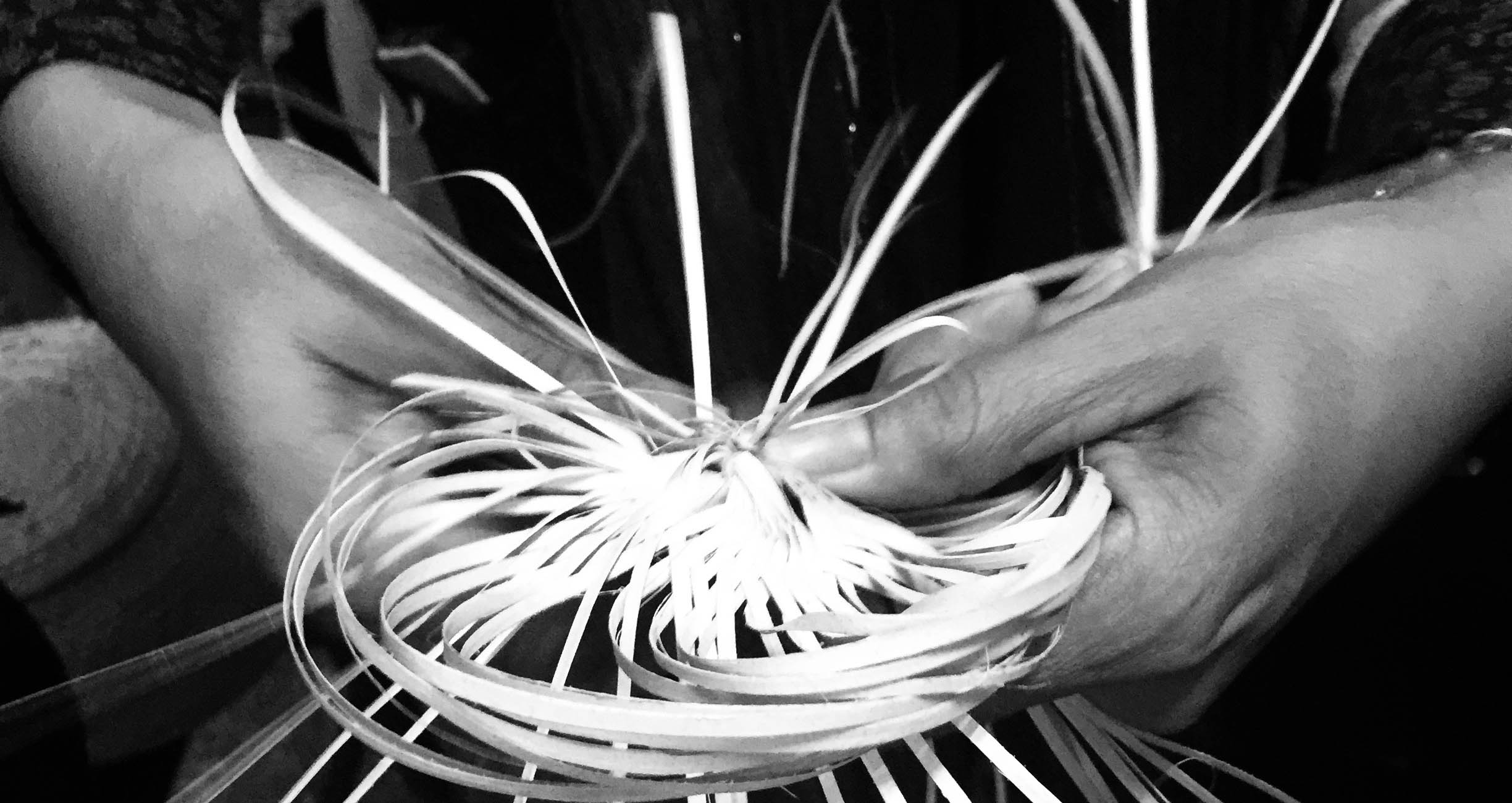
Terrol Dew Johnson is an artist, activist, and master basket weaver from the Tohono O’odham tribe. He collaborated with designers Benjamin Aranda and Chris Lasch on a series of weaving experiments that resulted in the exhibition Meeting the Clouds Halfway at the Museum of Contemporary Art in Tucson, Arizona, in 2016. What began as a conversation about similarities of traditional Native American craft and cutting-edge design became a decade-long exchange between the artist Johnson and the design studio of Aranda/Lasch.
Generations of Tohono O’odham basket weavers have used materials born from the Sonoran Desert. Coiling is at the core of their basket weaving traditions and rituals, and the act of coiling creates form through an intuitive geometric system and iterative movements. Rooted in this shared foundation of pattern making, Johnson and Aranda/Lasch produced a series of experimental baskets and woven constructions that combined the traditional art of basket weaving with new techniques that resulted in baskets made in a variety of materials including grass, wood, glass, concrete, plastic, and metal.
Basket weaving is as much a procedural process, warp and weft, as it is a social process. It brings people together, not only those that gather to weave but also the ancestors whose tradition they continue. Native American weavers, like the Tohono O’odham tribe, speak of an object’s many voices—as if each basket is a conversation in essence. Architecture, too, converses; between themes of universal significance, geometry, and matter, and the actual experience and material through which it becomes manifest. It is a boundless and inspiring conversation.
Continuing this collaboration and conversation for a commission in the new U.S. Embassy in Asuncion, Paraguay, Johnson and Aranda travelled to Paraguay to meet local artisans and weavers from different parts of the country. On their first day, the two met with a representative from the firm Gabinete de Arquitectura, at the art and design school within the National University of Paraguay in San Lorenzo. The Gabinete de Arquitectura principles Gloria Cabral and Solano Lopez, who in 2016 won the Golden Lion of the Venice Biennale of Architecture, combine rational yet innovative construction techniques with humble materials, such as Paraguayan brick, inviting a challenge to conventions.
On Wednesday, Johnson and Aranda traveled to the city of Benjamín Aceval to conduct a workshop with an indigenous group from Paraguay, Community Rosarino, located in the City of Villa Hayes. The artisans in the community shared their techniques and traditional crafts with Johnson and Aranda. The following day, the group traveled to Tobatí, where they met with Graciela Villalba, the director of Fundacion Tobati at Salon Villa Artesanal, and local artisans. Johnson and Aranda presented an overview of their work to participants and received a demonstration and instructions on local weaving techniques from local artist Sara Garay.
On Friday Johnson and Aranda visited the new Embassy building site, where they were able to meet with the construction team to review the site for the future commission. They also met with government representative Adriana Ortiz, President of the Instituto Paraguayo de Artesanía (IPA), who discussed the climate and opportunities for artisans within Paraguay, and who accompanied Aranda and an AIE curator for a visit to the neighborhood of Lomas San Geronimo and the private museum Fundación Texo.
The last day of the exchange, Johnson and Aranda were able to visit the amazing collection at the Museo del Barro, located in Asuncion, which features the incredible artisan crafts and traditions of Paraguay within a beautifully designed building.